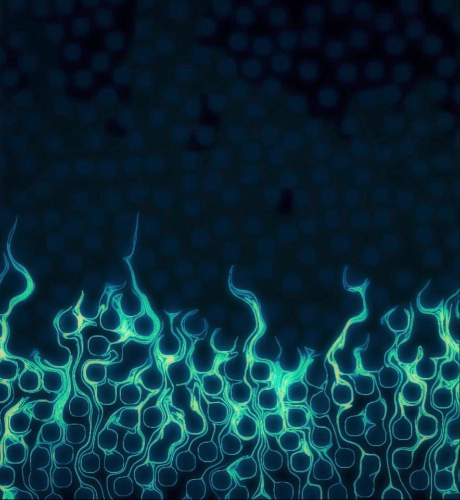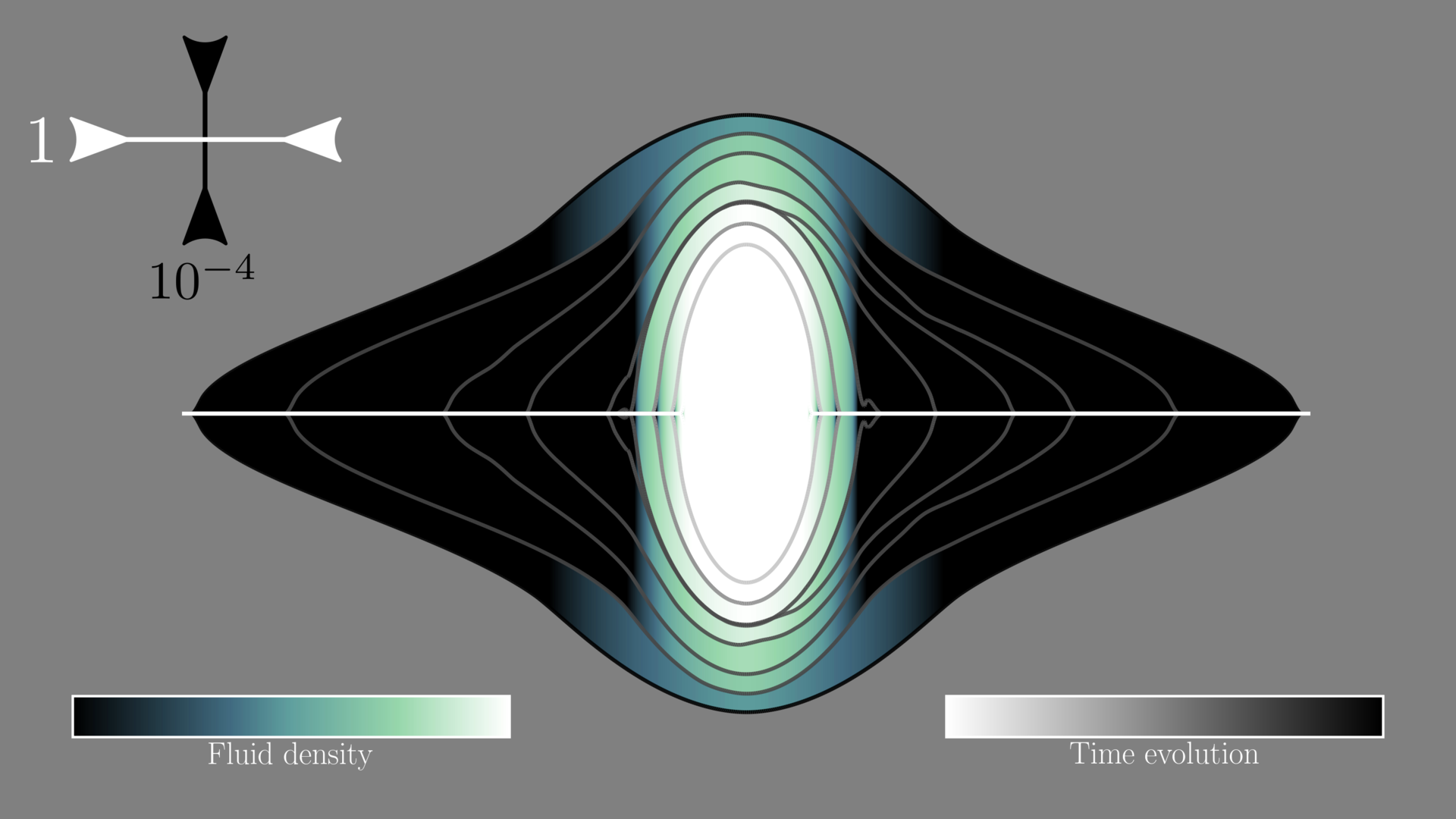About the project
Understanding the mechanisms of how fluids flow in porous and fractured rocks is of prime importance for many geological processes where fluid is naturally present (earthquakes, magmatic intrusions, aquifers) or artificially injected in the subsurface, as in the process of carbon capture and storage or the exploitation of geothermal reservoirs. This project tackles the modeling of flows in rocks from the pore to the fault and reservoir scales.

An important goal of this project is to better understand how mixing of miscible and immiscible fluids occurs in complex porous solids. We study these questions using lattice Boltzmann, finite element and particle simulations at the pore scale and combine these numerical simulations with theoretical approaches. We have investigated how the flow intermittency that arises when two phases are flowing concurrently influences how solutes are transported, and found that flow intermittency significantly enhances transverse spreading as well as the folding and stretching of fluid filaments that is a hallmark of chaotic mixing. We have developed a numerical framework to compute stretching and folding of strips and sheets to reveal possibly chaotic mixing properties of real porous rock.
Fluid flow also has an impact on the fracture network itself, as the injection of fluid can further open existing cracks. Understanding such processes is essential to assess the safety and integrity of underground storage (e.g. CO2, hydrogen). We have designed a numerical method solving the coupled dynamics of fluid flow and fracture growth. The picture below displays the sudden burst of a fluid-saturated crack).

Finally, this project also investigates fluid flow at larger scales where anthropogenic injection can reactivate existing crustal faults and induce detrimental seismicity. In this context, a collaboration with researchers from Ecole Polytechnique Fédérale de Lausanne conducting rock friction experiments shed new light on the fluid-induced reactivation of faults and the characteristics of the resulting frictional rupture (slow events versus fast and violent ruptures).
Financing
Equinor (Akademia, project MODIFLOW, 2019-2023), Swiss National Science Foundation, The Research Council of Norway, Center of Excellence (Porous Media Laboratory)
Cooperation
- The Njord Center, University of Oslo, Norway
- PoreLab, The Njord Center, University of Oslo, Norway
- Niels Bohr Institute, University of Copenhagen, Copenhagen, Denmark
- Université de Rennes 1, Rennes, France
